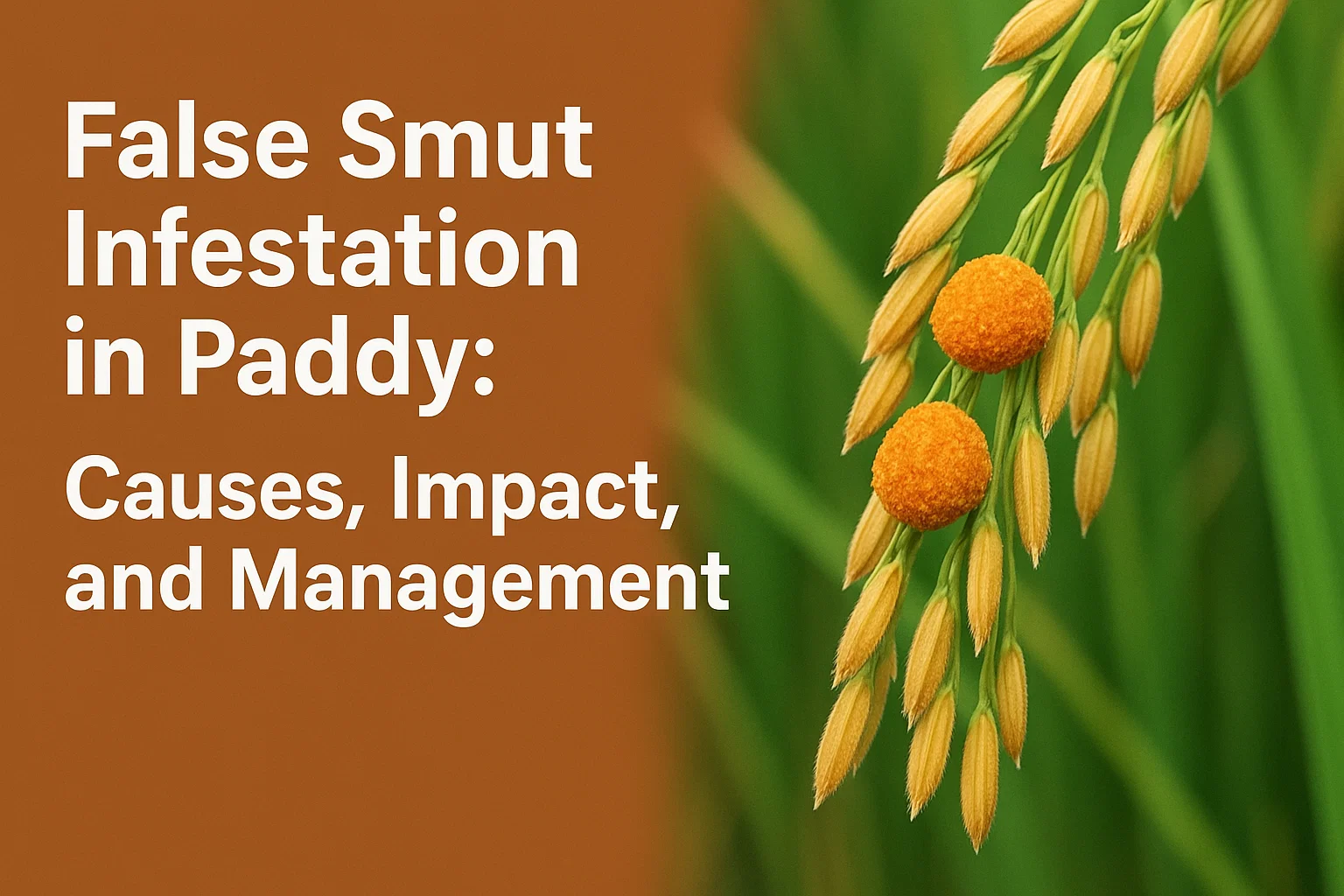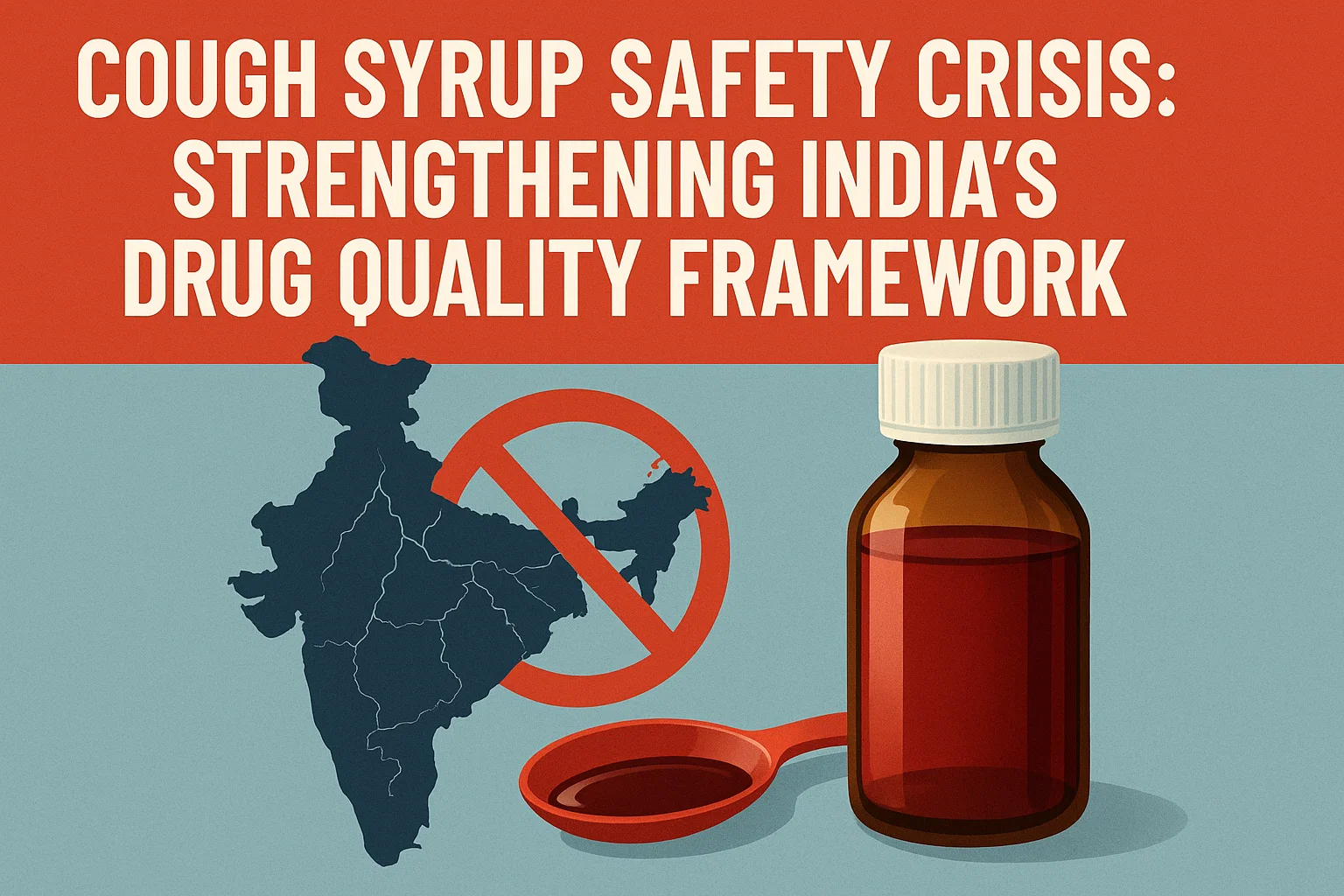False Smut Infestation in Paddy: Causes, Impact, and Management
False smut, a fungal rice disease in Punjab, spread due to rains disrupting spraying. Learn its causes, impact on yield, and effective management practices.
Context
In Punjab (2025), excessive rainfall and floods disrupted the normal cycle of anti-fungal spraying in paddy fields, allowing false smut to spread widely. The infestation has particularly impacted maturing and harvest-stage crops, including premium varieties such as Basmati rice, raising concerns about food security, farmer incomes, and kharif procurement targets. Agricultural experts point to climate-linked disruptions and gaps in preventive management as the main drivers of this fungal outbreak.
What is False Smut?
False smut is a fungal disease of paddy (rice) caused by the pathogen Ustilaginoidea virens. It is increasingly recognised as one of the most damaging diseases of rice, particularly in humid and flood-prone regions.
Characteristics and Symptoms
-
Spore Balls: The disease manifests as greenish spore balls on the surface of rice grains. These later change colour to yellowish-orange, resembling “smut balls” on panicles.
-
Discolouration: Panicles affected by the fungus appear discoloured and stunted.
-
Grain Quality: Instead of forming normal kernels, the fungus replaces the grain, leading to reduced weight and nutritional value.

Conditions Favouring the Disease
False smut thrives in conditions where moisture and humidity are high. The following factors increase its incidence:
-
High Humidity and Rainfall: Extended wet spells and excessive irrigation create ideal conditions for spore germination.
-
Flooding and Waterlogging: Water stagnation in fields accelerates fungal spread.
-
Missed Spraying Schedules: Heavy rains in Punjab prevented farmers from applying preventive fungicides at critical crop stages.
-
Climatic Variability: A combination of warm temperatures and wet conditions provides a favourable environment for infection.
Economic and Agricultural Impact
False smut is not just an agricultural challenge but also an economic threat:
-
Yield Loss: In mild infestations, losses are estimated at 2–6%, but severe outbreaks can result in significantly higher reductions.
-
Premium Varieties at Risk: High-value Basmati varieties, which form an important part of India’s export basket, are especially vulnerable.
-
Market Value: Infected grains lose both weight and quality, impacting procurement prices and farmer income.
-
Food Security Concerns: Given Punjab’s role in India’s kharif procurement, widespread infestations threaten national food supply stability.
Management and Control Measures
Effective management of false smut requires a combination of preventive measures, cultural practices, and timely intervention.
1. Preventive Fungicidal Spraying
-
Recommended Chemicals: Fungicides such as Carbendazim and Propiconazole are widely advised.
-
Application Timing: Preventive spraying is most effective during the pre-flowering stage of the crop.
-
Regular Monitoring: Farmers must rely on advisories from agricultural universities and extension services to time applications correctly.
2. Field Management Practices
-
Proper Drainage: Ensuring effective drainage helps prevent waterlogging, which reduces fungal proliferation.
-
Crop Rotation: Introducing non-host crops in rotation helps break the fungal life cycle.
-
Nutrient Management: Avoiding excessive nitrogen fertilisation lowers crop susceptibility to false smut.
3. Farmer Education and Extension Services
-
Localised weather-based advisories are crucial.
-
Dissemination of simple, practical guidance on fungicide application, crop monitoring, and soil health management can significantly reduce outbreak severity.
Broader Implications: Climate Change and Crop Health
Experts argue that the increased recurrence of diseases like false smut reflects climate-linked vulnerabilities in agriculture:
-
Erratic Rainfall Patterns: Unseasonal rains hinder timely spraying and create waterlogged fields.
-
Rising Temperatures: Warmer winters and extended monsoons allow pathogens to thrive longer.
-
Need for Climate-Resilient Practices: Strengthening agricultural infrastructure—such as better drainage systems, improved irrigation, and crop diversification—can provide long-term resilience.
Conclusion
The false smut outbreak in Punjab highlights the fragility of agriculture under changing climatic conditions. While the FCRA of plant protection (preventive spraying, proper drainage, crop rotation) remains essential, delays due to heavy rains and poor field-level implementation have exacerbated the spread.
To safeguard farmer incomes and national food security, India must strengthen climate-smart agriculture, invest in resilient varieties of paddy, and provide timely advisories and resources to farmers. A balanced approach that combines scientific interventions with grassroots-level training will be key to managing false smut and similar crop diseases in the future.
Subscribe to our Youtube Channel for more Valuable Content – TheStudyias
Download the App to Subscribe to our Courses – Thestudyias
The Source’s Authority and Ownership of the Article is Claimed By THE STUDY IAS BY MANIKANT SINGH





